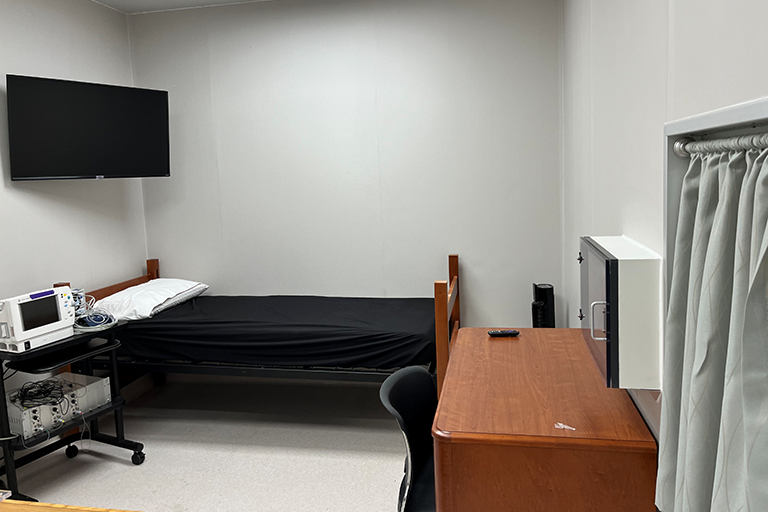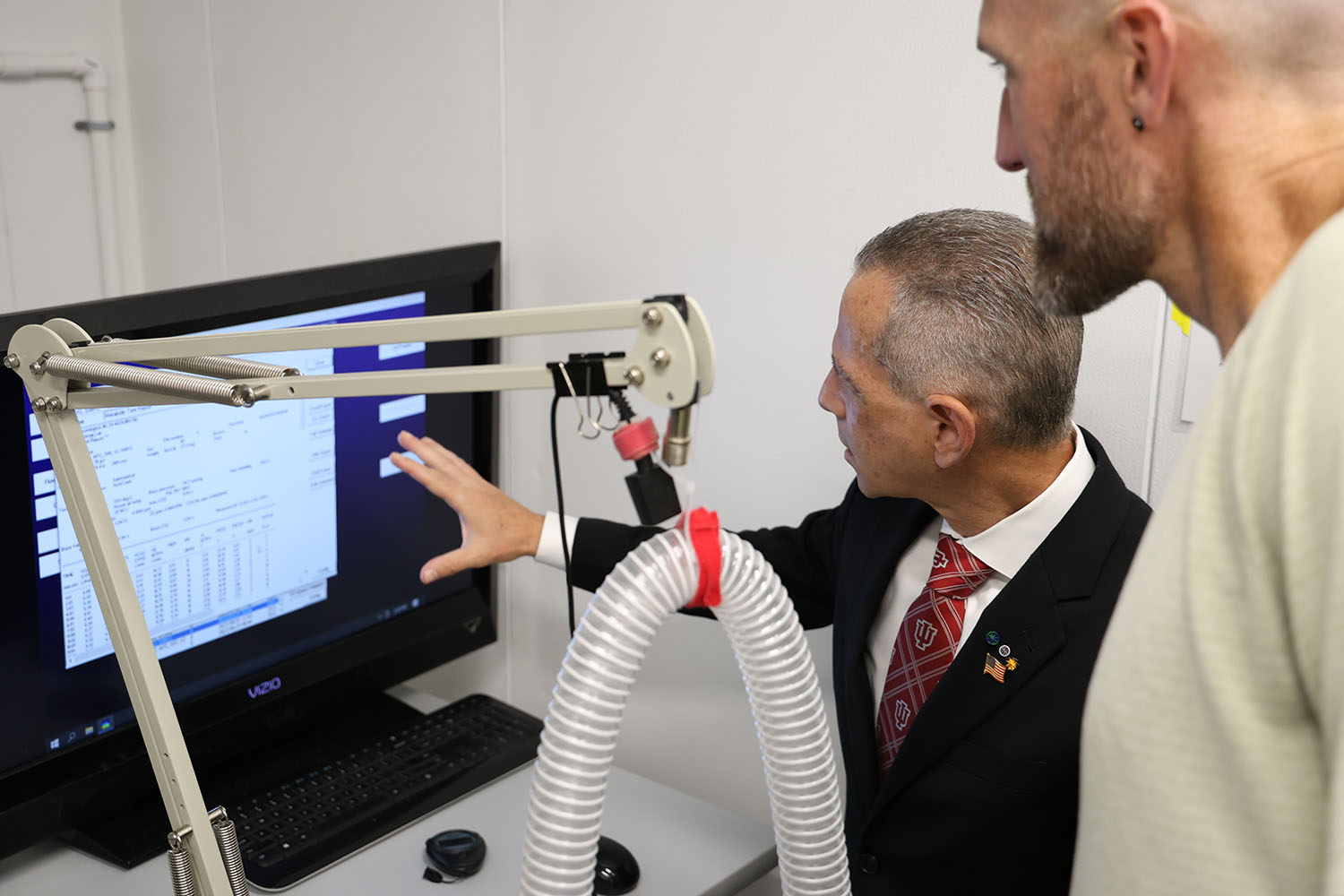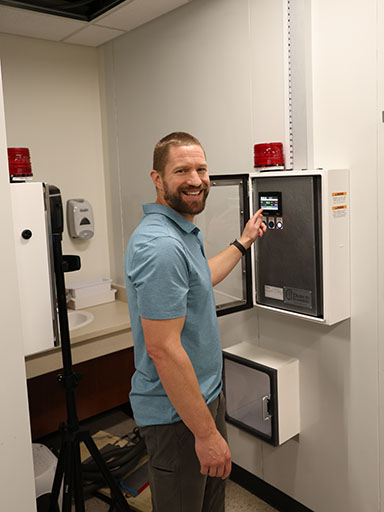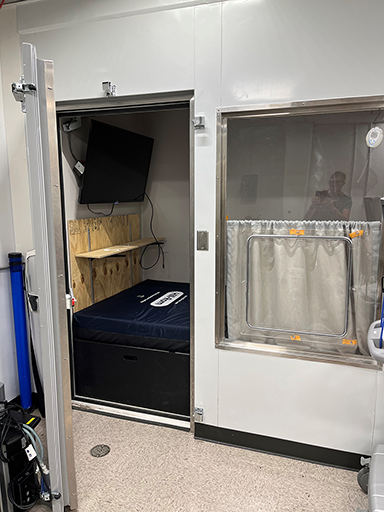The state-of-the-art and nationally unique Bioenergetics and Environmental Stress Suite inside the IU School of Public Health-Bloomington has three primary components that help address important translational research questions.
(1) Whole-Body Room Calorimeter
Our 12’ x 11’ enclosed calorimeter is the only system in the world to simultaneously measure energy expenditure and simulate altitude (~7,000 feet) by reducing the fraction of inspired oxygen. This enables researchers to mimic different environments and continuously measure human energy over extended periods (e.g., 24–72 hours), providing valuable real-time data across varying activities including rest, sleep, and light exercise. 
How does it work and what makes it unique?
Indirect calorimetry is a technique through which measurements of respiratory gas exchange are used to quantify energy expenditure and estimate substrate oxidation, specifically lipids and carbohydrates.
With “fresh air” always supplied to the room, specialized sensors and sophisticated software can detect subtle changes in inspired and expired gases. Assuming that nitrogen is a constant in both inspired and expired air, sampling of gases within the enclosed room permits determination of oxygen uptake and carbon dioxide production.




